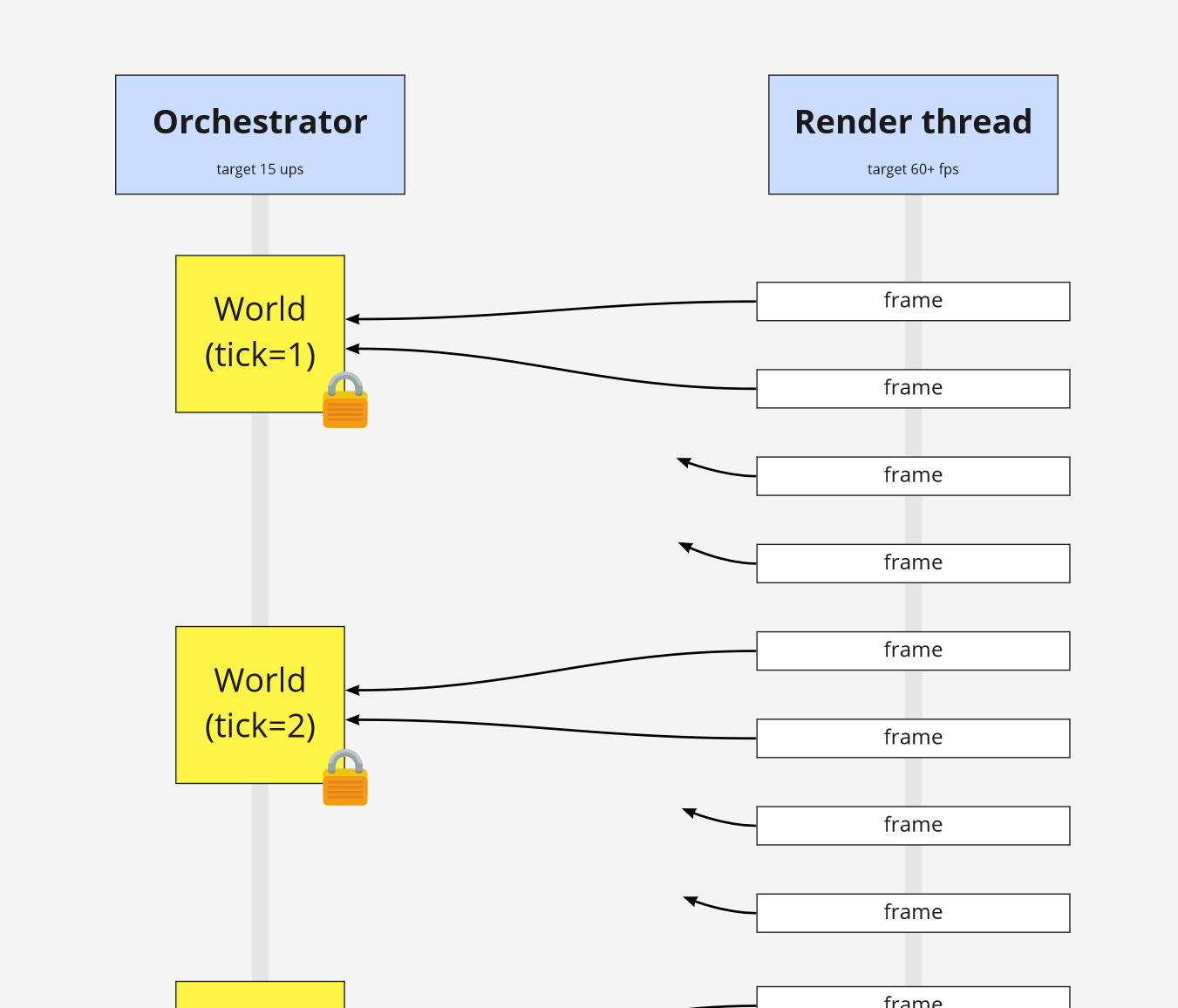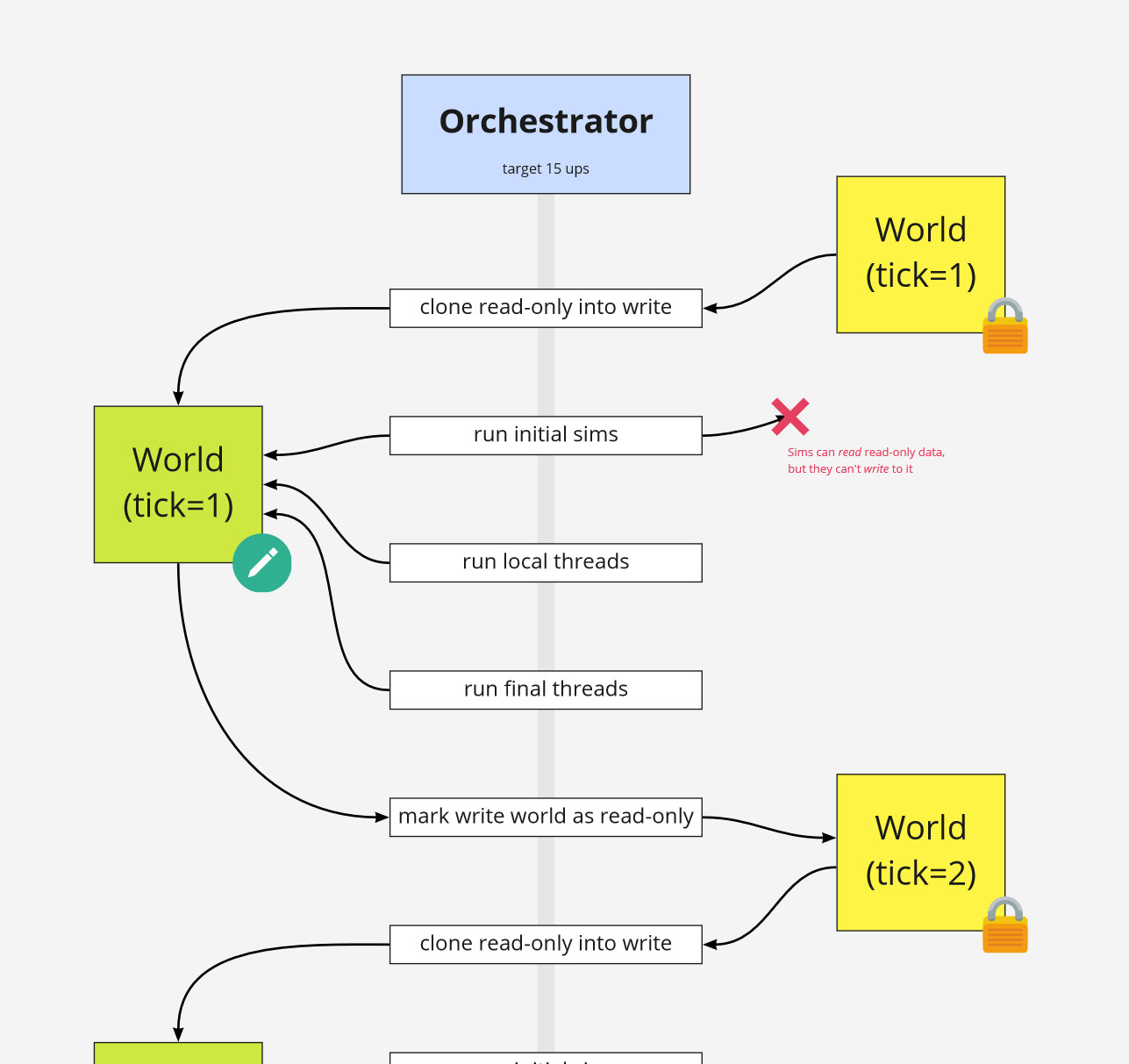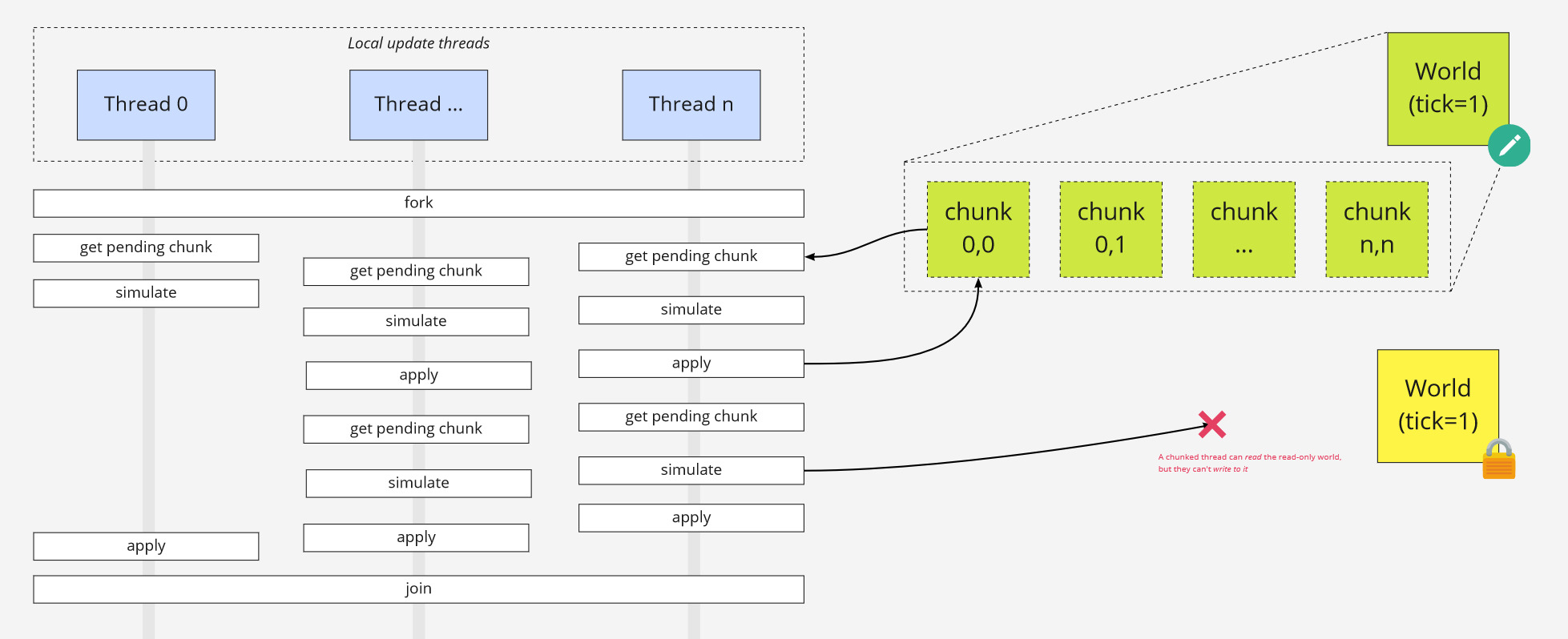Making Adaptory into a multithreaded simulation game
(Warning: technical gamedev post)
One of the reasons I started making Adaptory is that I wanted to try making a game that has multithreaded simulations. Most simulation games have a loop similar to:
- Take current game world
- Apply a bunch of simulations
- Save the changes
- Go back to 1
Generally this loop is done on a single thread, meaning the update performance is limited to the processing power of your CPU. I like playing huge game worlds and I’m always frustrated when a game I love starts hitting limits.
On the other hand, most computers these days have multiple cores – meaning they can run many processes simultaneously. Making a simulation game multithreaded is extremely difficult, but it is possible. (This is also one of the reasons I went with Java rather than C.)
Adaptory is a game with multiple simulations all interacting together, such as the element simulation:

This simulation must be reproducible and fast, and the rendering thread also needs to be fast. They shouldn’t be locked together; a game running at 15 FPS is not fun to play, and a simulation running at 60 FPS is unnecessary. For now, I’ve settled on the following design (I love a good architecture diagram 😅):
Adaptory’s Design
At a very high level, there are two types of game world – read-only, and read-write. The UI/render thread can only access the read-only game world. This design prevents some weird concurrency bugs.

To execute the simulations, there is an update orchestrator, that clones the read-only world into a new read-write world; queues, forks, and joins simulations; and then marks the new read-write world as the read-only world for the next tick. The UI/render thread then uses this world going forward. This also prevents other weird concurrency bugs happening the other way.

This design is flexible, and allows for a number of different simulation types, including long-running simulations and asynchronous queries. Ideally simulations can be broken down into smaller chunks that can run in parallel. ForkJoinPool provides a lot of this infrastructure for free:

Of course, the devil is in the details, and there are a lot of details… and I need to verify this actually works in a shippable game. At the moment, Adaptory has 14 simulations, including the element simulation, game event simulation, light level simulation, accessibility simulations, and others.
Results
Over the last two months I have focused on the performance of the simulations. Along with improving the element simulation by approximately ~90%, I’ve also verified that the multithreaded version of the game is faster than an equivalent single-threaded one!

(Once I saw this graph, I immediately started wondering, what’s preventing faster frames? Is it memory bandwidth, CPU performance, something else…? One of the benefits of using Java is that you’re insulated from the structure of internal memory, but one of the drawbacks is that you’re also insulated from the structure of internal memory…)
I’m confident that this architecture and these concepts are a good starting point. I still have lots of other optimisation ideas to try out, and I believe this design is adaptable and testable. I’m really happy with the results so far and I’m excited to see how far I can push it 😀